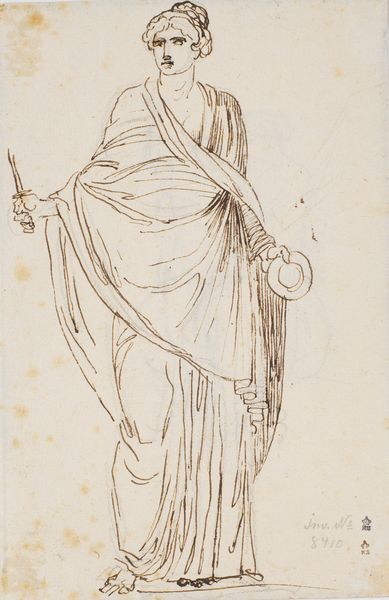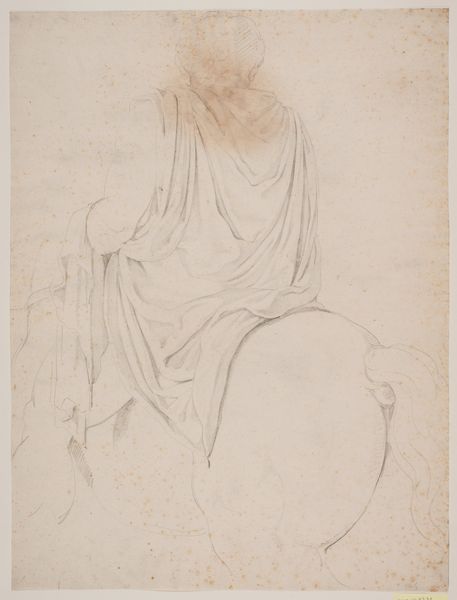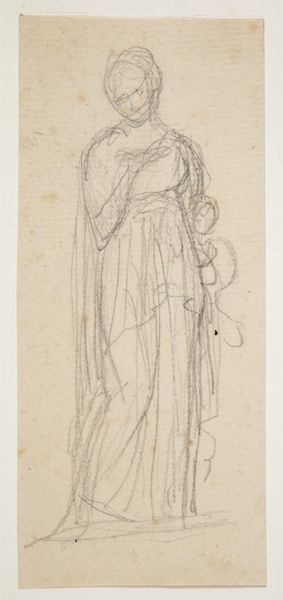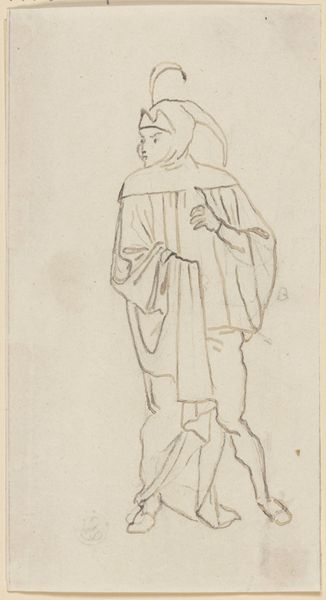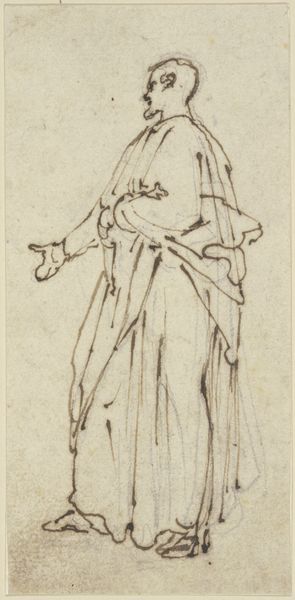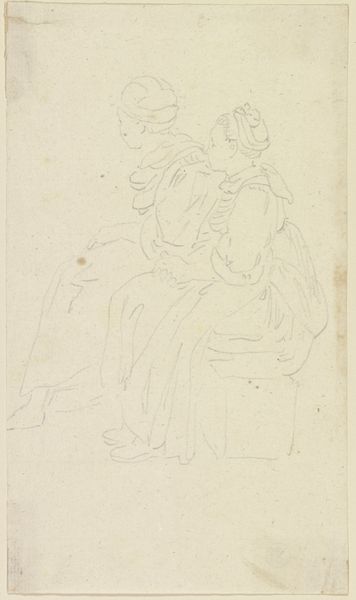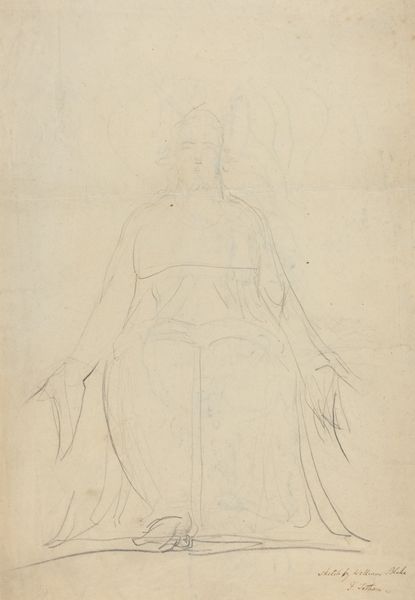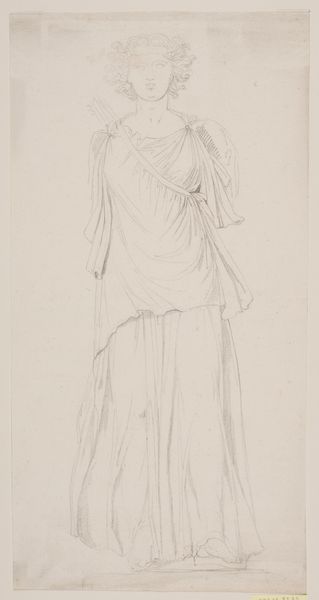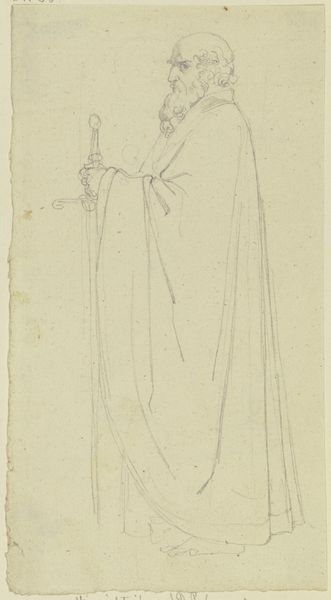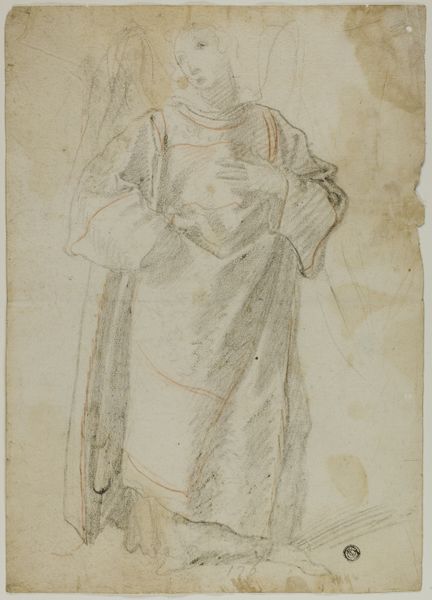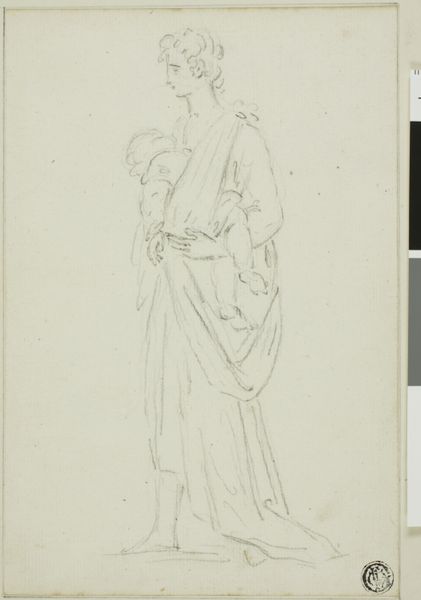
drawing, pencil
#
drawing
#
pencil sketch
#
study drawing
#
figuration
#
pencil drawing
#
pencil
#
history-painting
#
academic-art
Dimensions: 424 mm (height) x 252 mm (width) (bladmaal)
Editor: Here we have Nicolai Abildgaard’s “Asklepios,” a pencil drawing likely created between 1743 and 1809. It feels like a preliminary sketch. The lines are faint, but the figure is clearly holding a staff with a serpent coiled around it. What strikes you most about this piece? Curator: The serpent is key. Asklepios, of course, is the Greek god of medicine, and the serpent is his most enduring attribute. It symbolizes healing, regeneration, and knowledge passed down through generations. But it's interesting to see it here in such a raw, almost skeletal form. Editor: Skeletal is a good word for it. The whole drawing feels so...unadorned. Curator: Precisely! Consider the context. Abildgaard was working during a period heavily influenced by classical ideals. The grid beneath the figure emphasizes rational proportions, but the very visible pencil lines show us the artist's process. Abildgaard isn’t trying to create a perfect illusion. The symbol persists beyond the imperfections of artistic production. What do you make of the god’s expression? Editor: Hard to say. There's so little detail in the face. He seems...impassive? Detached? Curator: Perhaps that speaks to the nature of healing itself. Is it an act of pure emotion, or of measured, considered action? This image suggests a long legacy of medical knowledge, far older than the artist, rendered anew. Editor: That makes me think about the ongoing role of symbols and images in communicating medical authority through the ages. Curator: Exactly! The power of this sketch lies in how it reveals the continuous thread of cultural memory, and it reveals the ways symbols resonate across centuries, even in their simplest forms. Editor: I never would have thought a simple sketch could hold so much history! Curator: The image resonates because symbols continue to inform and reform in response to history. They persist within our visual vocabulary, continuing their slow symbolic work.
Comments
No comments
Be the first to comment and join the conversation on the ultimate creative platform.

